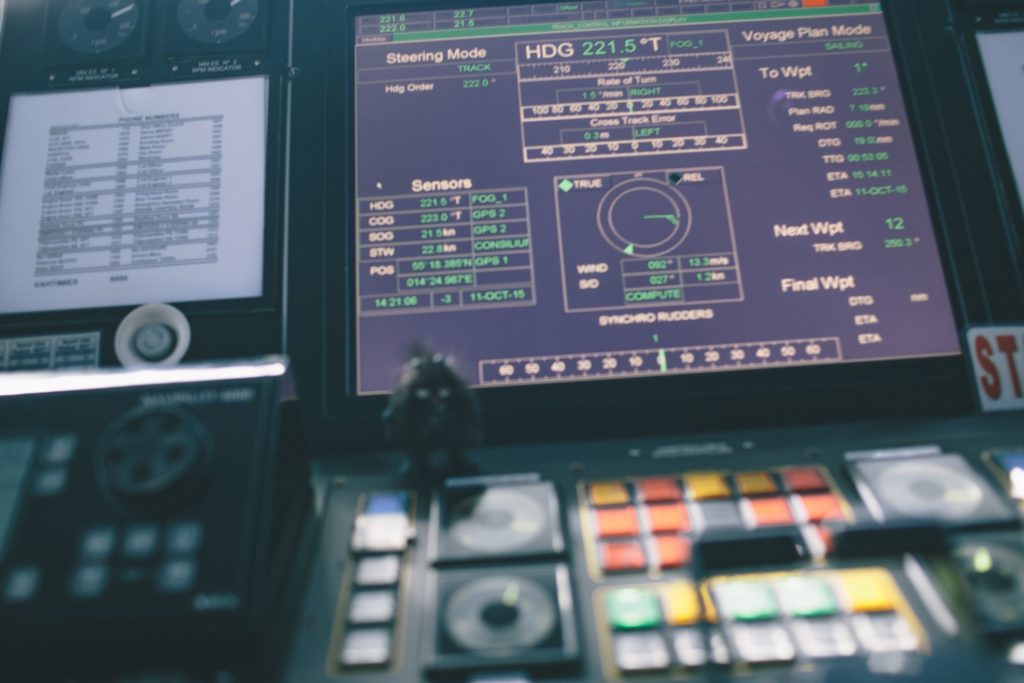Want a free ergonomic evaluation for your control room? Contact Mauell today!
Control rooms are very different than a typical office environment. As a 24/7/365 space, your control room must keep your operators comfortable around the clock. That’s where the science of ergonomics comes in.
A well-designed control room accommodates your operators’ physical needs, while also allowing them to make split-second, mission-critical decisions. It should combine form and function to keep operators and technology working in harmony. Operators should have minimal disruptions, outstanding comfort, and space to perform each aspect of their job function.
In this blog, we’ll examine the major considerations to keep in mind when it comes to control room design and ergonomics.
What are Ergonomics?
Ergonomics refers to the practice of molding a workspace to the needs of its inhabitants. Paying attention to ergonomics allows organizations to boost efficiency and productivity while reducing any discomfort. Understanding ergonomics can also prevent workplace injuries because it helps organizations better cater to their employees.
When it comes to control room design standards, ergonomics play a key role. Operators sit or stand at consoles for long periods of time as they perform repetitive movements. An awareness of ergonomics helps organizations anticipate the control room health and safety needs of their employees. And improved control room working conditions have a positive impact on operator productivity and job performance.
If you’re adding a new control room to your space or remodeling an existing room, it’s important to consider ergonomics during the design phase. This helps you reconcile your overall design with the day-to-day needs of your operators. It also saves you money in the long run, since you won’t have to retrofit your control room down the road.

Outfit Your Control Room with Sit-Stand Consoles
Your operators can’t take a walk around the building when they need a break, so they must be comfortable at their console. Sit-stand consoles are the perfect solution because they allow operators to adjust the height of their console to wherever they like. This means that they can be either seated or standing depending on their preference at that exact moment.
There are many benefits of sit-stand consoles, including:
- Because they’re height-adjustable, they can accommodate operators of any height.
- Being height-adjustable also allows them to accommodate different body types.
- The ability to stand helps prevent back strain because operators can stretch their spines.
- They’re a cost-effective option because they do double duty (sit and stand).
Make sure your operators keep the following in mind when they’re working at their consoles.
Practice Correct Posture
Good posture is important for a variety of reasons, such as keeping your joints in alignment and preventing muscle strain. This is especially relevant for your operators, since they need to be comfortable and healthy at all times. When they’re at their console, operators should:
- Have their wrists neutral and relaxed.
- Have their elbows resting on their desk at a 90-degree angle when using their keyboard.
- Be sitting up straight with relaxed shoulders.
- Have their screen between 20 and 30” of their face.
- Have their head level or bent at 15-25 degrees and in line with their body.
- Have their monitors tilted slightly upwards.
- Never hunch over or twist their bodies into awkward positions.
You might consider adding soft console nosing to provide additional ergonomics in control room design. Operators are constantly leaning against the edges of their console, which can get uncomfortable. Providing flexible urethane nosing with a waterfall edge is the perfect low-cost solution.
Don’t Forget to Stand!
There are many benefits of standing, especially when you’re at work. Make sure your operators can take advantage of them by providing sit-stand consoles. A few benefits of standing include:
- Lowered risk of weight gain and obesity
- Lowered blood sugar levels
- Lowered risk of heart disease
- Reduced back pain and muscle strain
- Improved mood and energy levels
- Improved posture
- Improved engagement and focus
If your operators complain of back or foot pain while standing, you can provide them with anti-fatigue mats. These help take some of the strain off of their bodies by absorbing it into a soft surface.
Provide Ergonomic Control Room Chairs
When your operators do sit down, they’ll each have a specific preference when it comes to their chair. While some may need a stiff chair that supports their back, others may want something softer to sink into. Your best bet is to choose 24/7 chairs with full adjustment capabilities that are specifically intended for use in control rooms. Don’t forget about footrests, too.

Maintain a Comfortable Temperature
Temperature can be a major point of contention in a control room, especially one that’s full of people and equipment. The fact that everyone has a different temperature comfort level further complicates things. Some operators are always cold, while others are always hot.
The best way to solve this problem is through consoles with individual heating and cooling controls. A few manufacturers are integrating user-adjustable ventilation controls, and others are adding individual radiant heaters. You can also reduce excess heat (and noise) by placing electronics in a dedicated equipment room.
Pay Attention to Ambient and Task Lighting Levels
Like temperature, each operator will have their own preference when it comes to control room lighting standards. Inadequate lighting can cause eye strain, which is a major health concern. On the other hand, too much light can lead to headaches or cast a painful glare. Light levels have an impact on job performance, so your operators must be able to see their workstation without straining their eyes.
The ambient lighting in your control room should be between 300-750 lux, and each operator’s task lighting should be around 600 lux. These lux levels will cast light on the console work surface without creating a glare on the monitors.
The best way to accommodate your operators’ individual preferences is by providing consoles with dimmable task lighting. This allows them to evenly light their work surface without negatively affecting operators at neighboring consoles.
Create Operator-Friendly Room Acoustics
Room acoustics also play a major role in proper ergonomics in control room design. Simply put, acoustics are how sound waves behave within an enclosed room. Based on the objects inside, every room will react differently to individual sound frequencies. Each item or individual within a room affects how sound waves move within that space.
It’s important not to overlook acoustics when you’re designing and outfitting your control room. The wrong noises can cause headaches, distract your operators, and negatively impact their decision-making. You may find that your equipment (e.g. printers or projectors) is creating unnecessary background noise that’s detrimental to your operators. Alarms and foot traffic through the control room can also be an unwelcome distraction.
The additions and adjustments below can help you improve your control room acoustics.
Carpeting
Carpeting the floors of your control room is one of the best ways to stifle unnecessary sound. It’s an affordable option that’s especially useful in large control rooms.
Acoustic Panels
These can be mounted to the ceiling of your control room, arranged in the middle of the room, or placed between consoles. They have a high PPI (pores-per-inch) rating, so they’re ideal for sound absorption and diffusion. Acoustic panels also offer a clean look and can be dressed up for both form and function.

Foam
Foam is cheaper than acoustic panels and can also work well as a sound diffuser. Be sure to choose foam with a high PPI rating to ensure a positive impact on room acoustics.
Privacy Panels
If you don’t have many places to mount foam or acoustic panels, you may want to consider privacy panels. Along with blocking and absorbing sound in the middle of the room, these can be installed between each console. When used this way, they help block sound and light for increased operator comfort.
Arrange Display Layouts Thoughtfully
Like every other aspect of your control room, your monitors should be laid out strategically and with close attention to operator comfort. Choose monitors that are the proper size and don’t surround operators with too many displays. If they need to see a wall of monitors in addition to their console displays, make sure they can do so without having to move.
Purposeful display layouts also help ensure your operators maintain healthy sight lines. Don’t put displays in places where operators have to strain their eyes to read them. This contributes to operator fatigue since they’re constantly shifting their bodies into uncomfortable positions. Placing displays with ergonomics in mind goes a long way towards keeping your operators comfortable.


